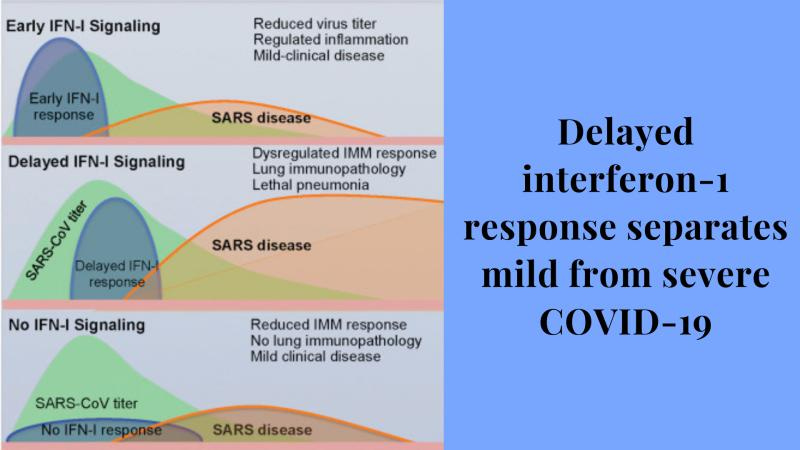Based on my prior research into severe COVID-19, it was known that the critical factor for predicting severe disease was a delayed interferon response.
An early response or weak interferon response did not cause an accumulation of immature macrophages in the lungs and therefore the progression to severe disease would not occur.

How does Ivermectin, a drug mainly used for parasitic infections, help in this circumstance?
A recent paper in Cell was the scientific ‘aha’ moment for me.
SARS-COV2 infection sequence
Virus spreads via aerosol droplets to attach on to cilia in the nasal passages
Virus travels down the cilia to enter into nasal sustentacular cells
Once in the cell, Omicron RNA is released into the cytoplasm from the endosome. Important to note that Omicron does not need TMPRSS to enter the cells and uses an endosomal entry (image below).
Viral replication begins with inhibition of interferon and increased expression of PAK1 and PAK4.
Increased PAK1 and PAK4 increase the size of microvilli until they become tree like above the mucus layer.
Virus then spreads to other cells.
Omicron preferentially focuses on the sinuses and therefore has less risk of severe COVID-19 lung disease.
Prior variants that use the TMPRSS (Wuhan, Alpha, Delta) are more efficient at spreading to the lungs within 48 hours.
If interferon remains suppressed and virus interacts with lung plasmacytoid dendritic cell, there is an interferon overreaction leading to macrophage accumulation in the lungs.
This situation can potentially lead to a cytokine storm if the immune system becomes hyperactivated in patients with elevated levels of serum ACE-2.
How does Ivermectin impact on this process?
Ivermectin will slow the initial viral spread by blocking PAK1 and therefore reducing the speed of growth of microvilli in infected cells.
Slower spread of virus increases the chance of an interferon response in the upper airway, prior to virus spreading to the lung.
Early interferon will not stop lung infection but prevent the excessive interferon response potentially leading to a cytokine storm.
Why does Ivermectin not work all the time?
In patients who have interferon autoantibodies (up to 10% of the population), the inhibition of PAK1 will slow viral spread but there will still be an interferon over reaction on virus arriving to the lungs.
Would it help to stop the pandemic?
Absolutely.
The inhibition of PAK1 across the population will reduce the viral load in the community and therefore reduce spread of disease.
This will help even in those who have interferon autoantibodies.
What about the vaccinated?
Although the vaccinated have an immune response that is blunted toward Omicron, ivermectin will still slow the ability of the virus to spread.
What other agents can impact on PAK1?
This was why the mechanism was so important as it allows other therapeutics to work for COVID-19.
Propolis ( bee product)
Melatonin
Ciclesonide
Triterpene/Triptolide
Artemisinin (anti malarial)
Extract of Chinese (Sichuan) Pepper (Hua Jiao)
FK228 (Istodax)
Hydroxychloroquine (HCQ)
Ketorolac
Vitamin D3
Maruta, Hiroshi, and Hong He. "PAK1-blockers: Potential Therapeutics against COVID-19." Medicine in drug discovery 6 (2020): 100039.
Conversely, PAK4 inhibition seems to be more difficult with less therapeutic options available. Another area that needs further research.





